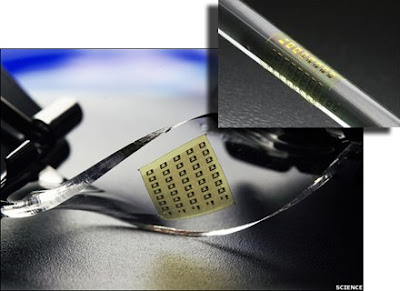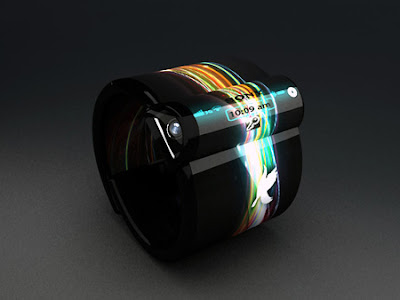Nokia’s virtual keyboard

Nokia, you've done it again. As usual, the Finnish mobile phone kingpin has produced the kind of innovation and "wow" that we've come to expect with its latest patent request: a virtual keyboard. That's right, until now we've had to suffer the indignation of using a physical keyboard, vainly hoping that one day a company would come along with a concept that would upend the establishment and put a stop to the tyranny of single use, out-dated plastic keys... and now that day has come. Still, something seems vaguely familiar about this patent which details the workings of a "Mobile device with virtual keyboard." Okay, this system differs from others in that it expects you to wiggle your fingers around in front of the phone's camera, and responds to sound as well as vibrations, yet somehow we feel like the company's efforts could be better directed. A nice new QWERTY model wouldn't bother us, for instance.
As the capabilities of mobile devices are getting closer and closer to that of portable computers, the only thing limiting their use as such is their size. It is simply impossible to replicate the possibilities of good sized QWERTY keyboard for data entry in a small mobile device.
Various workarounds has been thought up to deal with that. And one of the more interesting and promising is virtual keyboards or even virtual input displays, projected on the working surface. There is already a number of such virtual keyboard devices on the market and Samsung has a patent pending for use of projected virtual display in a phone.
But Nokia now has an even better idea described in a patent application called “Mobile device with virtual keyboard”.
Why do we need additional projectors at all? Most of the mobile phones already come equipped with optical sensors and cameras. Let’s use them to give us virtual keyboards:
Various workarounds has been thought up to deal with that. And one of the more interesting and promising is virtual keyboards or even virtual input displays, projected on the working surface. There is already a number of such virtual keyboard devices on the market and Samsung has a patent pending for use of projected virtual display in a phone.
But Nokia now has an even better idea described in a patent application called “Mobile device with virtual keyboard”.
Why do we need additional projectors at all? Most of the mobile phones already come equipped with optical sensors and cameras. Let’s use them to give us virtual keyboards:
The digital camera on the phone is used to capture the movement and position of user fingers, and project them on a virtual keyboard shown on the phone display, in real time.
The phone is also equipped with the sensors to capture the sound or vibrations, generated as the user taps on the working surface (e.g. desk or table) and convert them into an input commands.
The phone itself can come with a cradle to hold it in upright position while user is typing on a table. But that is not necessary. The user can just be holding the phone in one hand and typing with another. And if no working surface is available, the user can just imitate the tapping sound with his voice.
The phone is also equipped with the sensors to capture the sound or vibrations, generated as the user taps on the working surface (e.g. desk or table) and convert them into an input commands.
The phone itself can come with a cradle to hold it in upright position while user is typing on a table. But that is not necessary. The user can just be holding the phone in one hand and typing with another. And if no working surface is available, the user can just imitate the tapping sound with his voice.



Comments